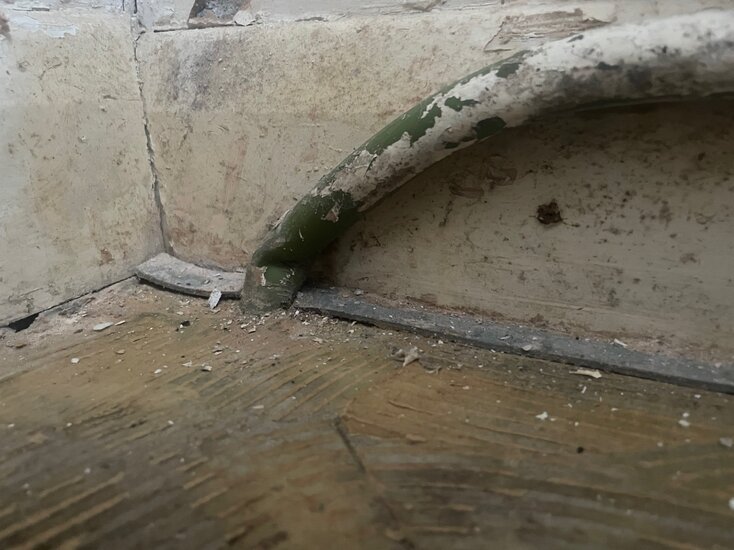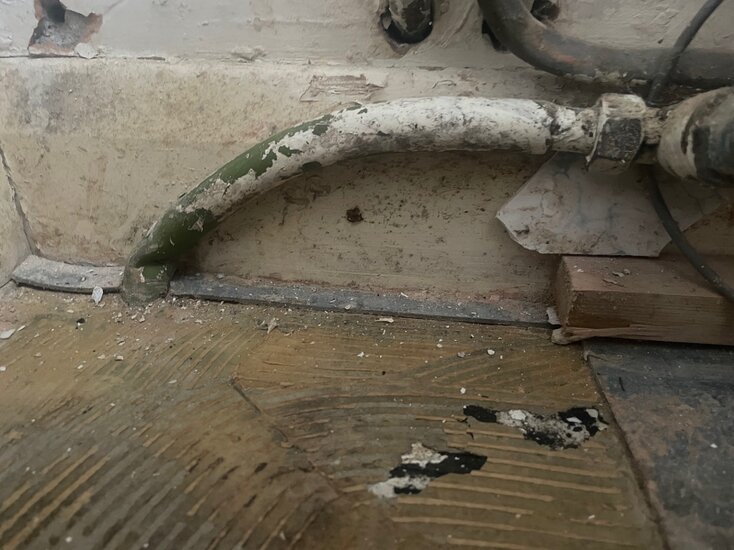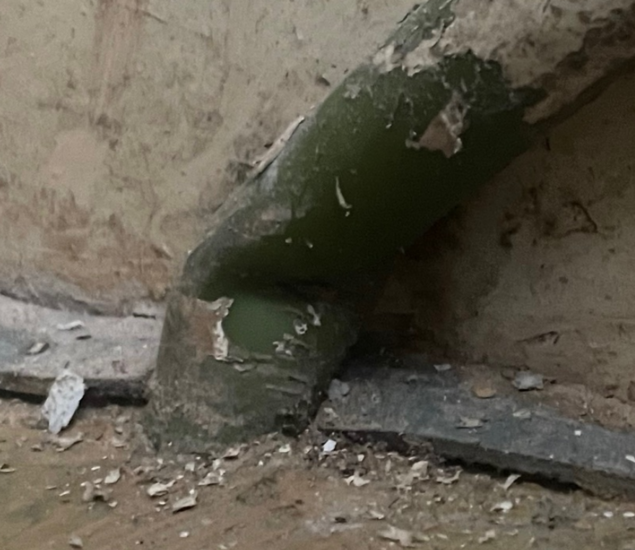Hello all,
I have attached a picture of a a pipe that I need some help identifying in terms of make / material etc.
It is the incoming main to the house to the internal stopcock, appearing out of the floor in the cloakroom. It is plastic of some type and I believe to be 15mm. The pipe is heavily creased and risks splitting and also the customer wants the pipe moving slightly. I may well have to do some digging to expose a suitable place to connect on to it. Green plastic 15mm is not something I have come across before....lead yes, steel yes, blue mdpe yes, but not this. Before I break into it I want to identify it and a suitable fitting. It may well be 15mm barrier type pipe. Many thanks
I have attached a picture of a a pipe that I need some help identifying in terms of make / material etc.
It is the incoming main to the house to the internal stopcock, appearing out of the floor in the cloakroom. It is plastic of some type and I believe to be 15mm. The pipe is heavily creased and risks splitting and also the customer wants the pipe moving slightly. I may well have to do some digging to expose a suitable place to connect on to it. Green plastic 15mm is not something I have come across before....lead yes, steel yes, blue mdpe yes, but not this. Before I break into it I want to identify it and a suitable fitting. It may well be 15mm barrier type pipe. Many thanks






